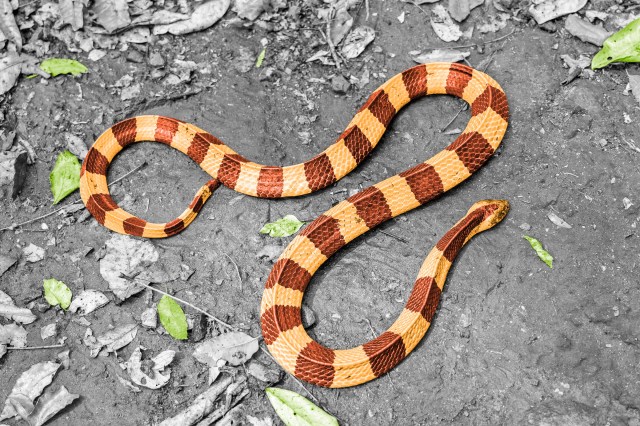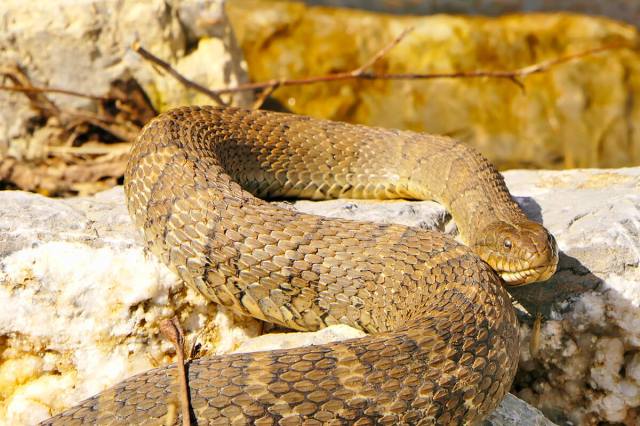
Snakes Are “Solar-Powered”
Snakes are known as cold-blooded creatures, but that doesn’t mean their blood literally runs cold. What it actually means is they can’t generate their own body heat and instead rely on external sources — such as sunlight — to regulate their body temperatures. This ecothermic characteristic explains why they’re often seen basking in the sun to warm up or slithering under a rock to cool down. Snake species from colder climates survive the winter season through brumation — the reptilian version of mammalian hibernation — during which they may wake for water, but otherwise remain dormant.
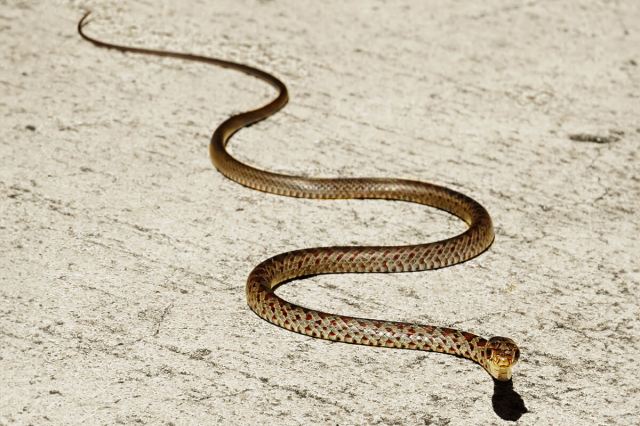
Slithering Is Just One of Several Ways Snakes Can Move
Slithering is perhaps the most recognizable form of movement associated with snakes. Known as lateral undulation, this S-shaped movement can carry them quickly across many diverse terrains. But snakes are capable of a wide range of locomotive techniques depending on their environment and circumstances. Other notable types of movement include sidewinding (a sideward slithering used primarily on sand), concertina (coiling up, then straightening), and rectilinear (using their bellies to move in a straight line). Some snakes, such as the paradise tree snakes found in Southeast Asia, even know how to fly, pushing themselves off tree branches and gliding at certain angles to their desired landing spots.
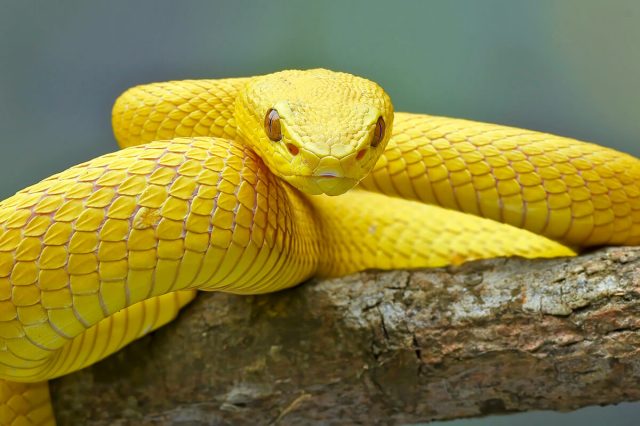
Certain Snakes Have Heat Vision
Some snakes are able to detect the infrared waves that emanate from warm objects. This “heat vision” is primarily found in pit vipers, boas, and pythons, and is the result of not only their eyes, but also special pits located between their eyes and nostrils or along their lips, depending on the species. These facial heat sensors take in the infrared radiation and send those signals to the brain, which then pass the information on to the eyes and produce a thermal image. These thermal images are the reason snakes can so accurately locate prey even in complete darkness, which comes in handy since snakes are neither nocturnal nor diurnal, and thus can be active at any time of day.
More Interesting Reads
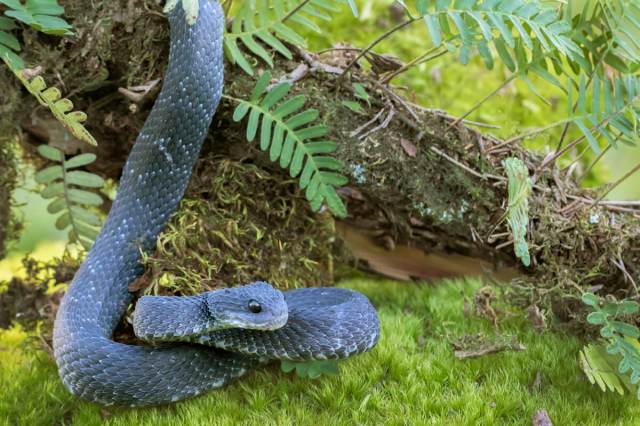
Snakes Live on Every Continent Except Antarctica
The thousands of serpentine species throughout the world live just about everywhere, from dense Amazonian rainforests to the arid deserts of Africa, and the tropical islands of southeast Asia to the temperate woods of North America. They’ve colonized a variety of habitats — in fact, live snakes can be found everywhere in the world except the continent of Antarctica. The glacial ice cover is simply too cold for the reptiles, which, as previously mentioned, rely on external heat sources to regulate their body temperature. There are also some relatively temperate regions that have no known snake populations, including Ireland, thanks in large part to the way it was separated from other landmasses at the end of the last ice age and the animals’ resulting inability to reach the island.

Snakes Smell With Their Tongues, Not Their Nostrils
Although they do have nostrils, snakes primarily smell using their tongues, which explains why they’re constantly flicking the distinctive forked organ in and out of their mouths. The tongue itself has no olfactory receptors (nor does it have any taste buds). Instead, it gathers scent particles from the air and ground and brings them back into the snake’s mouth. Once inside, the particles go to the sensory organ on the roof of the mouth, known as the Jacobson’s organ. The particles are analyzed, and information about the chemical composition of the smells is sent to the brain, helping snakes identify prey, predators, and potential mates. The forked shape of the tongue can even help to determine the direction the scent came from.

